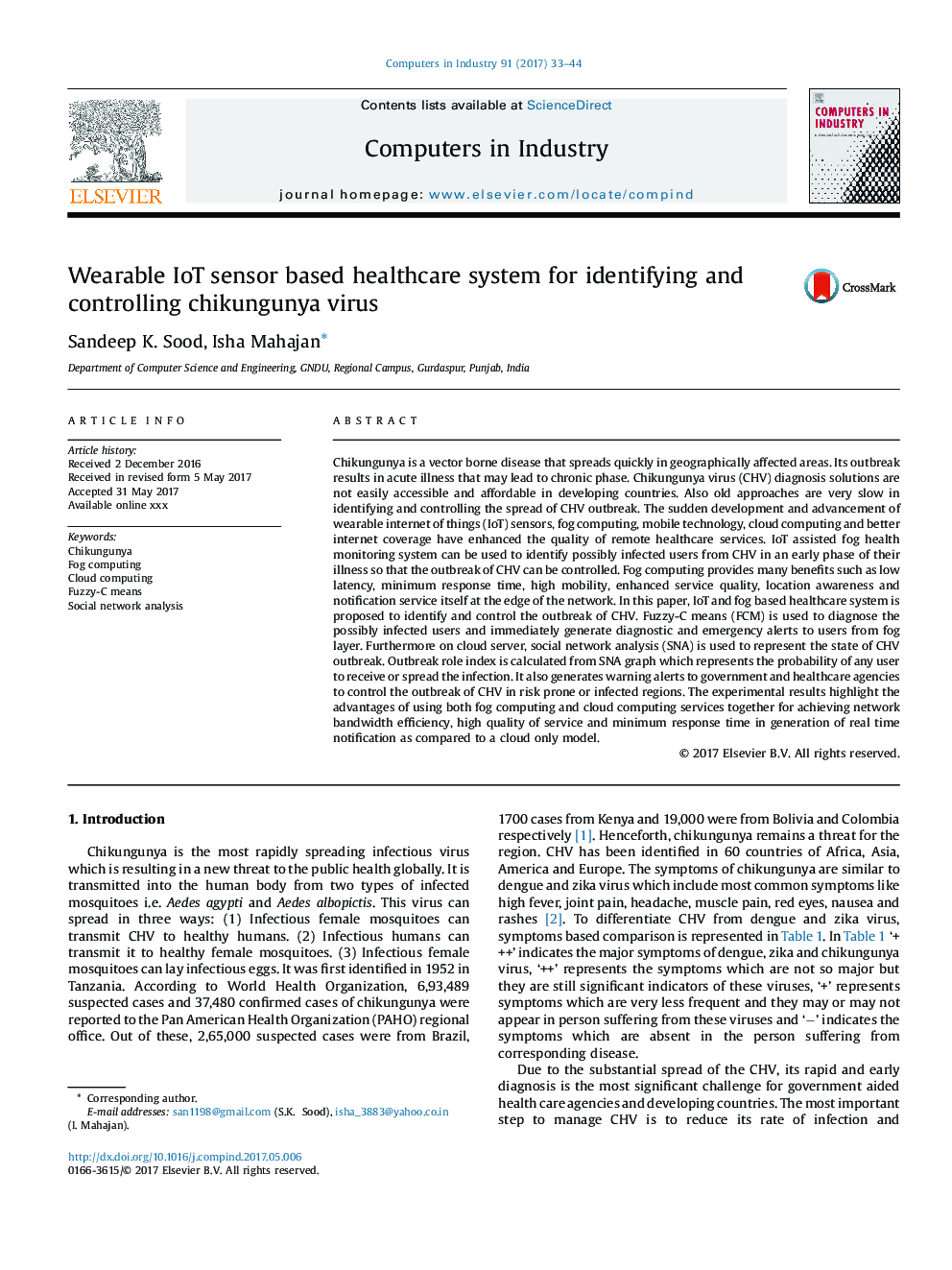| Article ID | Journal | Published Year | Pages | File Type |
|---|---|---|---|---|
| 4965520 | Computers in Industry | 2017 | 12 Pages |
Abstract
Chikungunya is a vector borne disease that spreads quickly in geographically affected areas. Its outbreak results in acute illness that may lead to chronic phase. Chikungunya virus (CHV) diagnosis solutions are not easily accessible and affordable in developing countries. Also old approaches are very slow in identifying and controlling the spread of CHV outbreak. The sudden development and advancement of wearable internet of things (IoT) sensors, fog computing, mobile technology, cloud computing and better internet coverage have enhanced the quality of remote healthcare services. IoT assisted fog health monitoring system can be used to identify possibly infected users from CHV in an early phase of their illness so that the outbreak of CHV can be controlled. Fog computing provides many benefits such as low latency, minimum response time, high mobility, enhanced service quality, location awareness and notification service itself at the edge of the network. In this paper, IoT and fog based healthcare system is proposed to identify and control the outbreak of CHV. Fuzzy-C means (FCM) is used to diagnose the possibly infected users and immediately generate diagnostic and emergency alerts to users from fog layer. Furthermore on cloud server, social network analysis (SNA) is used to represent the state of CHV outbreak. Outbreak role index is calculated from SNA graph which represents the probability of any user to receive or spread the infection. It also generates warning alerts to government and healthcare agencies to control the outbreak of CHV in risk prone or infected regions. The experimental results highlight the advantages of using both fog computing and cloud computing services together for achieving network bandwidth efficiency, high quality of service and minimum response time in generation of real time notification as compared to a cloud only model.
Related Topics
Physical Sciences and Engineering
Computer Science
Computer Science Applications
Authors
Sandeep K. Sood, Isha Mahajan,
